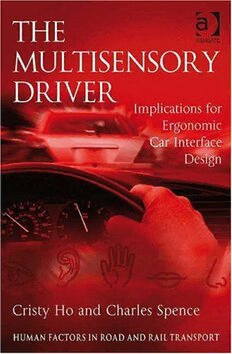
The Multisensory Driver (Human Factors in Road and Rail Transport) PDF
158 Pages·2008·0.819 MB·English
Most books are stored in the elastic cloud where traffic is expensive. For this reason, we have a limit on daily download.
Preview The Multisensory Driver (Human Factors in Road and Rail Transport)
Description:
Driver inattention has been identified as one of the leading causes for car accidents, estimated to account for as much as 78 per cent of all accidents (Klauer et al., 2006; Treat et al., 1977; Wang, Knipling, and Goodman, 1996). The issue of attentional overload while driving is likely to worsen in years to come, due in part to the availability of increasingly complex in-car technologies. Meanwhile, intelligent transport systems are being developed to assist drivers and to ensure a safe road environment.One approach to the design of ergonomic automobile systems is to integrate our understanding of the human information processing systems into the design process. This book is dedicated to furthering the design of ergonomic multisensory interfaces by highlighting recent evidence in this area emerging from the fast-growing field of cognitive neuroscience. It focuses primarily on two aspects of driver information-processing: multisensory interactions and the spatial distribution of attention in driving." The Multisensory Driver" provides an array of interface design guidelines together with a detailed review of current cognitive neuroscience and behavioral research in multisensory human perception. These guidelines will help to facilitate the future development of more ergonomic interfaces. The discussion on spatial attention is particularly relevant for car interface designers, yet at the same time it should also appeal to cognitive psychologists interested in spatial attention and the applications of their theoretical research findings. By providing a detailed description of a cohesive series of psychophysical experiments on multisensory warning signals conducted in both laboratory and simulator settings, this book provides an approach for those in the engineering discipline who are interested to test their systems with human observers systematically.
See more
The list of books you might like
Most books are stored in the elastic cloud where traffic is expensive. For this reason, we have a limit on daily download.
